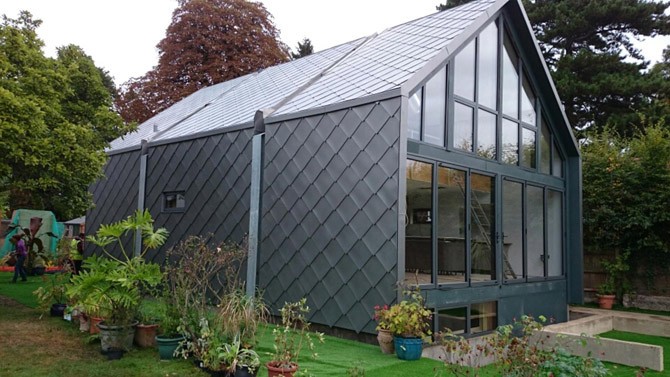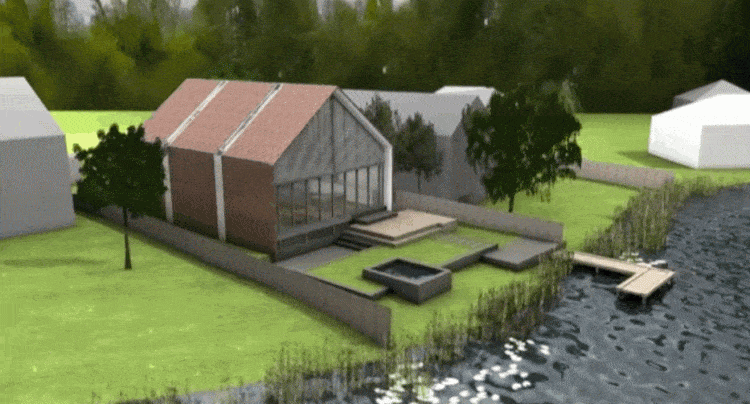
According to US Navy statistics, some 70% of the world’s population lives in a coastal area, with 40% living within sight of the ocean in regions that are increasingly prone to flooding. Tens of millions more people live in the flood planes adjacent to major rivers, and every year, we are greeted by grim pictures of the tragic consequences of living near the water.
Given the realities of global warming, there are some who would say we should simply give up on the coast. Move further inland. There are, of course, a number of problems with this approach. First, there are trillions of dollars’ worth of infrastructure that have been poured into coastal areas over the course of literally centuries. Second, doing so would represent the largest migration in human history – a project so vast in scale that it boggles the mind. There are other issues with the approach of simply moving, but given the two big ones, it’s hard to see how such an idea will ever gain serious traction.
If running away won’t work, and traditional methods of keeping the sea at bay (dams and break walls) have led to tragic failure in the past (remember Katrina), What can be done then, with such a vast percentage of the population living near rising waters? There’s good news on that front, and one of the more intriguing options that’s been fronted is the notion of the Amphibious House – that is, a house that’s at home both on land and on the water. Note that this is markedly different from an aquatic house. Such homes are native to the water, and generally rest on enormous pontoons. They simply can’t exist anywhere but water.
Their landlocked cousins, stilt houses, also exist only in one world. They can’t exist on the water, and are simply elevated, allowing the water to run beneath them in times of flooding. For obvious reasons, both of these designs have their limitations, which brings us back to the notion of the Amphibious House, that can exist in both places, depending on changing conditions.
Construction Methods

By all outward appearances, these homes appear to be quite similar, and certainly the functional equivalent, of homes built around them. Peer inside though, and take a closer look, and you’ll see some remarkable differences.
For one thing, the Amphibious Home is built in a concrete cradle, with steel support posts running up the sides of the home to eliminate the possibility of horizontal movement during a flood event. You can see an example of the support posts in the image shown here (http://www.theguardian.com/artanddesign/2016/feb/02/baca-architects-pioneers-of-amphibious-housebuilding-flood-defences#img-2 ). The dock that the home rests in is made of steel sheet piling with a mesh base that allows water to drain away naturally as the flood waters recede.
The basic idea here is that, just like boat docks rise when the water level changes, the Amphibious House is designed to welcome the water in, and gradually rise with it as it comes. The home in the example photo above is designed to rise as much as nine feet, a number settled on by examining worst case scenario figures for the area that it’s being built in, on the shores of the Thames River.
An alternate approach to the problem of negating horizontal movement while allowing for vertical flux is shown in the image here (http://www.buoyantfoundation.org/images/image1.jpg ), with the posts you see in the illustration providing the same basic function.
Another common design element in these types of homes has to do with the landscaping surrounding the home proper. Here, the idea is to use a terraced approach, leading down to the water, which provides a convenient visual marker for those living in the homes. The house will, of course, rise naturally on its own when flooding begins, but residents can tell at a glance how far the flood waters are advancing, thanks to the terraced landscaping design, and can plan accordingly.
In order to be buoyant, weight is a factor, so typically, these homes are built with timber. Stone or steel is simply too heavy for this type of construction, and the concrete base that the home rests on is actually a polymer foam that’s clad in concrete, providing all the stability, but at a fraction of the total weight.
Who’s Doing This?

As you might imagine, this is still a nascent industry, barely out of its formative stages. Only a few dozen truly Amphibious Homes exist yet, anywhere in the world, so the work that’s being done is in the hands of a few pioneering architectural firms. There are three major players in this space so far, and they are:
- Baca (http://www.baca.uk.com/ )
- Dura Vermeer (https://en.duravermeer.nl/ )
- And the Buoyant Foundation Project (http://www.buoyantfoundation.org/ )
Note that the first two mentioned are actually best known in the Netherlands, a nation with lots of direct experience in dealing with flood conditions. Known as “The Low Country,” nearly 80% of the nation sits at, or slightly below sea level, so it is perhaps no surprise that the leading thinkers about this particular topic hail from such an area.
The BFP (Buoyant Foundation Project) is an outgrowth of various other global warming summits and initiatives, and seeks to bring together the best architectural minds from around the world to tackle the problem.
The Future Of Amphibious Homes
It’s hard to imagine a future where the Amphibious Home doesn’t have a significant role to play. The hard reality is that we’ve got literally billions of the world’s people living in areas that are prone to flooding. The water is coming whether we like it, or are ready for it or not, and it’s impractical to simply pick up more than half the world’s population and move to higher ground, further inland.
Given that, adaptive strategies are going to have to be conceived. The design of a functional Amphibious Home, habitable regardless of flood conditions, is just the sort of creative thinking we’ll need in the decades to come.
Already, there are a few dozen of these homes in use today. In coming years, you can expect to see that number increase dramatically. Each time there’s serious coastal flooding, the public will increasingly demand it. A fantastic way to provide added security and peace of mind, and some truly amazing creative thinking at work. If you live in a flood prone area, or are thinking of moving into one, consider an Amphibious Home when you build. You’ll be glad you did!


Comments
Loading…